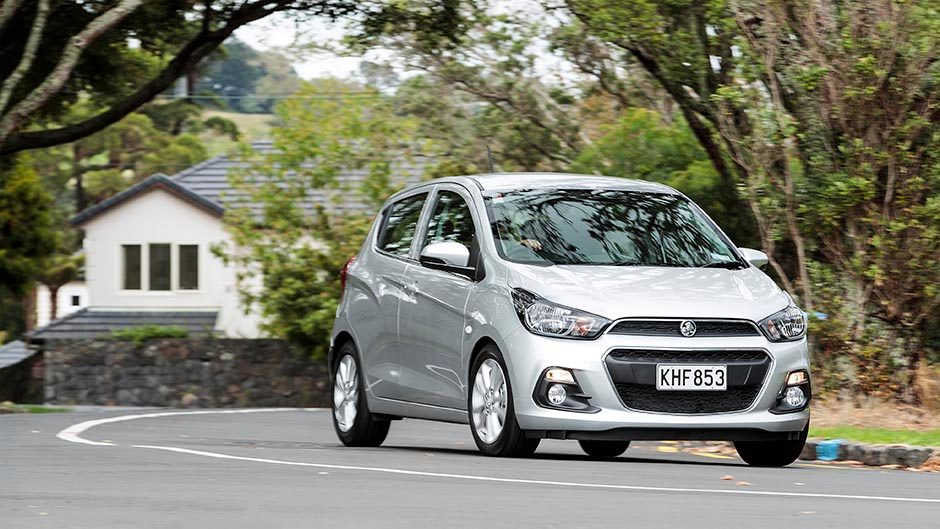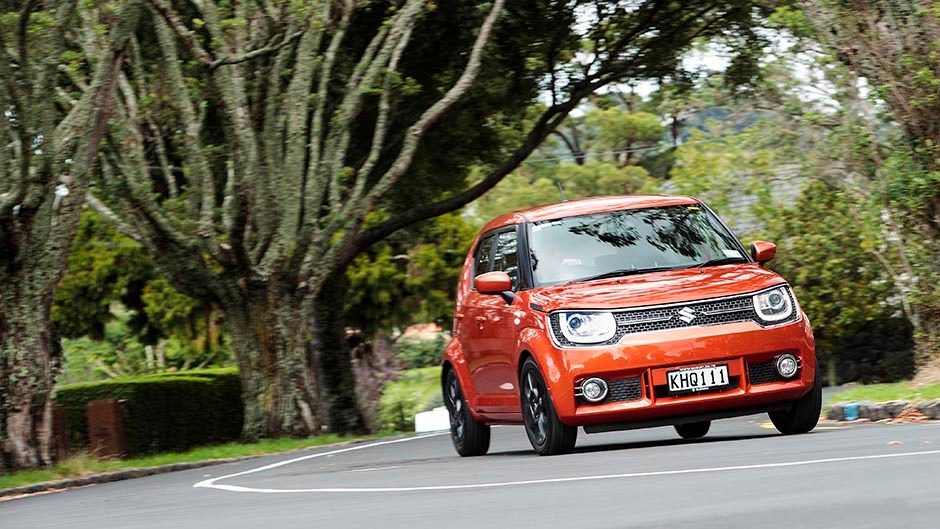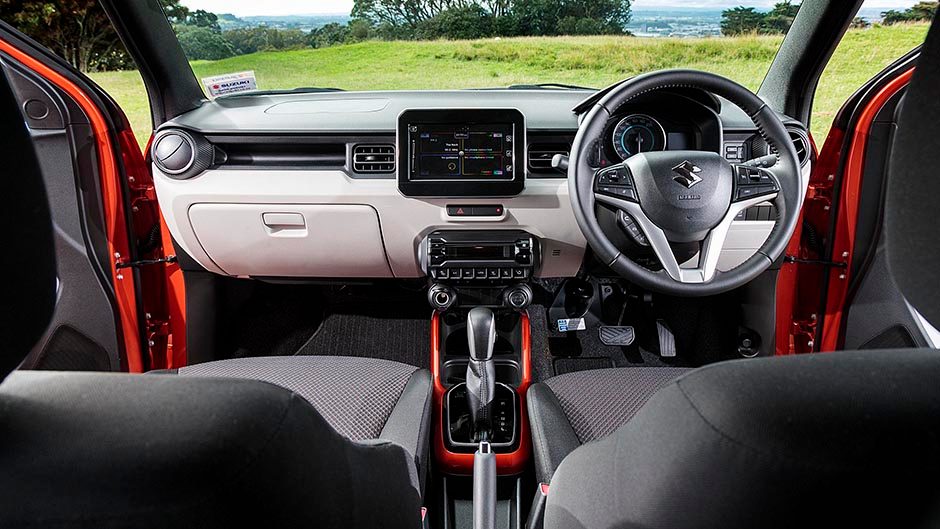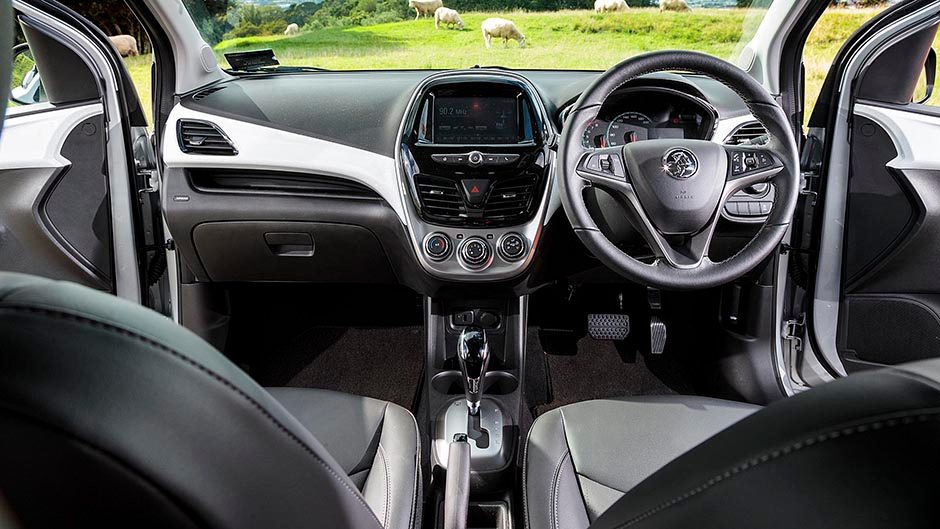Suzuki’s latest Ignis really does stretch the definition of SUV. No kidding, Suzuki is describing the new Ignis as such. We guess it’s styled like an SUV; some air added to the underside, an upright stance, wheel arch flares, you can’t forget them, the raised seating position and a heap of marketing hype. Whatever label you want to lob at the little Ignis, its price and proportions place it on shopping lists which will include all the usual small car suspects, not that there are many to choose from. Cars at this end of the market make up around two per cent of overall sales and of those Holden’s Spark is the best. So we thought it reasonable to toss the Ignis straight into the ring with a comparison test.
The price is right
Price is a key motivator for shoppers of the smallest players, and Holden has the advantage here with sharp stickers on its Spark range, the entry-level LS at just $16,490 for a three-pedal version while the more feature-rich, auto-only LT is $19,990. The Ignis cheekily charges the usual SUV premium that the market has been conditioned to accept, the range starting at $18,990 for the GLX manual, while this LTD, with a specification to match that of the Spark LT, is $22,500. While two and a half grand isn’t a huge difference, in percentage terms the Ignis commands a 13 per cent premium.
These two may be small but boast a decent degree of spec. Smart key operation, touchscreen infotainment systems with smart phone mirroring (Apple only on the Ignis), reversing camera (the Spark with sensors too), cruise control (with limiter in Ignis), trip computer, Bluetooth, USB input, alloy wheels, and funked up cabins to appeal to youthful buyers. The Ignis picks up a few extras like climate air, LED headlamps and DRLs, along with integrated sat nav.

Both feature the minimum requirement when it comes to safety gear, with ESP and air bags, seat belt reminders and the like. The Spark wears a five-star rating from the ANCAP safety programme, while the Ignis carries a three-star rating from the Euro NCAP mob. This is due to the differences in the assessment standards with ANCAP yet to implement the testing of active safety measures. The Ignis in other markets can be had with an active safety pack to bring it up to a current (and more valid) Euro NCAP five-star rating, but this pack is yet to be offered here.But it highlights how difficult it is for the average punter to compare crash ratings. Even trying to analyse the full test results of the two cars leaves you at a loss as they are not compatible. We are sure the sales people will be able to clear it all up for you in an unbiased fashion. Neither car brand currently offers any capped price or scheduled servicing plans for these models. Making them work Both are mechanically similar in concept with the usual Mac strut front and torsion beam rear ends, and a small four-pot petrol driving the front wheels via a CVT auto.The Ignis can be had with a 4×4 set-up in some markets, but not here. The Suzuki employs a 1.2-litre with 66kW and 120Nm which isn’t much but the Ignis is based on Suzuki’s new small car platform that maximises lightness. At 895kg, we could almost lift the Ignis on to the scales ourselves. The Spark employs a big bore 1.4 with 73kW and 124Nm, but as it weighs 1010kg, its slight power advantage is negated. Against the clock the Ignis is quicker, thanks in part to its transmission. It makes more of the outputs when selecting the sports mode button, which sets it to stir up the torque and horsepower peaks more vigorously.
Making them work
It’s a cunning tactic to employ in town running too, where otherwise the CVT attempts to drop the engine speed right back to 1200rpm, but really there isn’t the low-end torque to pull it off. And then you’re constantly pushing the throttle back down to keep pace with traffic. The Spark feels a little more energised in civic ramblings; its CVT keeps the engine simmering around the 1500-2000rpm mark and it is quicker to respond to more throttle, though neither will ever be confused for rocketships. They do the job for a city car but any time these two are stretched beyond 4000rpm it feels like torture.
They can however handle open road running. Cruising at 100km/h uses just 2000rpm, so they aren’t too noisy in that regard, and as the treads are small, tyre roar is minimal.
While the Suzuki has a better steering feel with less slop around centre, it’s on the slow side at 3.5 turns lock-to-lock, but we guess it is an SUV… It does have a tighter turn around circle though. The Ignis doesn’t ride as well as the Spark, highlighting more of a road’s bad bits, but it dispatches speed bumps better.
The Spark’s low hanging bumper spats can touch down occasionally. Ignis is remarkably light which makes for nimble handling, though the rubber limits overall adhesion, while the steering can rattle in bumpy corners. The Spark may be a little heavier but it feels more stable, and with a little more tyre and a lower centre of gravity flows through the bends easier.

Are SUVs always more practical?
The Ignis is longer both overall and in the wheelbase, and with its higher set seats there’s more passenger space in the rear. In LTD guise, the Ignis is a four-seater only, but there’s good legroom and the rear doors open out wider for better access. Both cars have Isofix points but child restraints fit more easily in the Ignis.
Opening up the fifth door, each has the usual small hold one expects from this class which are easily filled to overflowing with a week’s grocery shopping or a single suitcase. However, the Ignis has a sliding rear seat which can expand the boot space quite handily yet still offers up useable passenger space. It folds easily too and while it doesn’t sink down flat, it’s a better solution than the Spark’s. Here you need to flip the seat bases up first, then fold the rear seat down, only to fail as you haven’t pushed the front seats forward to allow room.
The interior of the Ignis is as funky as its exterior with a tablet-like look for the touchscreen, a novel design for the ventilation controls and a few contrasting colour treatments. The Spark too throws some colour at the dash but is otherwise conventional.

Both have an oversupply of hard plastic and we want to know who thought the faux leather trim in the Spark was a good idea. The seats in the Suzi are preferable, with better support and comfort and, being set higher, it’s easier to drop down into them. The Ignis gains Suzuki’s easy-to-use infotainment screen, with built-in GPS nav, whereas you’ll need to plug your smartphone into the Spark for directions.
Both offer the chance to personalise their appearances. Spark buyers can upgrade to bigger alloys, one design with a racy red finish, and you can add coloured grille surrounds, wing mirror caps and a bigger spoiler. There are even more bits to stick on the Ignis.
You can add colour to the air vents, door handles and console while for the exterior there are contrasting accents for the light and grille surrounds, a decal set to highlight the body lines or, if you want to emphasise its SUV-ness, go for the front skid plate, larger mud flaps, and oversized side body mouldings.

Which to choose?
As we often conclude when testing these micro vehicles, we’d scratch together a few more beans to buy a car from the class above, like Swift (new model due soon) or Barina. But if it must be a micro, hmm, it’s a hard one here. If rear passengers are going to be a rarity, save the money and buy the Spark; we generally preferred the drive in the Holden. Those who need a little more space for passengers and cargo will be advised to pay more for the Ignis.
| Model | Holden Spark LT | Price | $19,990 |
| Engine | 1399cc, IL4, EFI, 73kW/128Nm | Drivetrain | CVT, front-wheel drive |
| Fuel Use | 5.5L/100km | C02 Output | 166g/km |
| 0-100km/h | 11.39sec | Weight | 1010kg |
| Model | Suzuki Ignis LTD | Price | $22,500 |
| Engine | 1242cc, IL4, EFI, 66kW/120Nm | Drivetrain | CVT, front-wheel drive |
| Fuel Use | 4.9L/100km | C02 Output | 114g/km |
| 0-100km/h | 11.10sec | Weight | 893kg |


